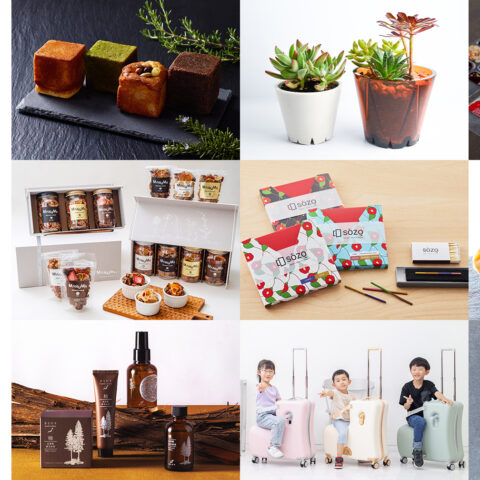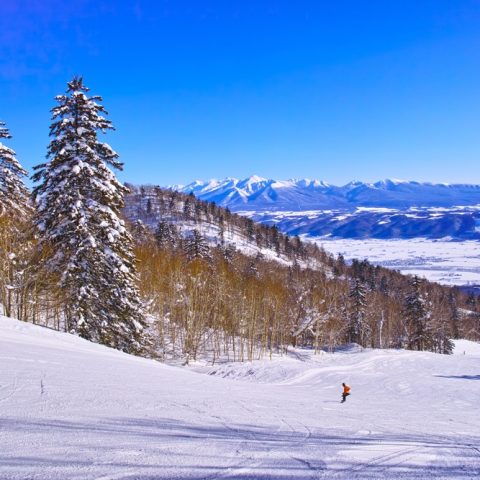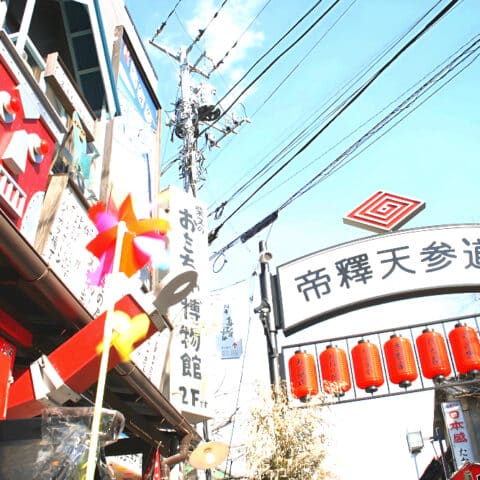
Welcome back to the third part of our Japan Ultimate Bucketlist! (First part is available here and second part here). In this section we will explore the center-south regions of Kansai and Chugoku, filled with ancient history, stunning nature, spiritual traditions, and as always, good food!
KANSAI
HYOGO: RELAX IN AN ONSEN TOWN AND TASTE ONE OF THE BEST MEATS IN THE WORLD

- To see: Kinosaki Onsen
Located north of Hyogo prefecture on the coast of the Sea of Japan, Kinosaki Onsen is one of the most renowned hot springs in the Kansai region and one of the oldest in the country. Kinosaki’s origins date back to around 1400 years ago, when a legend spread about an oriental white stork that healed his wounded wing in the waters of the thermal springs!
The town is teeming with ryokans, each of which boasts its own onsen, but the flagship of Kinosaki are the seven public onsen that dot the city along with a series of ashiyu, or small basins where you can soak your feet, and some fountains from which you can drink thermal water. Moreover, each of the seven onsen boasts different features and hot springs, so make sure to try each one of them!

- To eat: Kobe Beef
Kobe beef is one of the most delicious and acclaimed meat in the world, and what better way to taste this delicacy than in its prefecture of origin? Kobe beef is a highly prized meat that comes from cows from the Hyogo area, near the city of Kobe. It is prepared grilled, dipped in sukiyaki, shabu shabu, and even raw. A meal with this meat can be quite expensive, but the taste of this meat is unsurpassed!
KYOTO: THE HEART OF ANCIENT JAPAN

- To see: Bamboo Forest
In the district of Arashiyama, north-west of Kyoto, there is a true natural wonder: the Arashiyama bamboo forest. These bamboo plants are more than ten meters high, and the light that filters through them is suffused, almost from the world of fairy tales. This natural light show even has a specific Japanese word: komorebi, untranslatable into other languages!
The Arashiyama bamboo forest is truly a magical place to take long walks and take a break from the city. It even has its own soundtrack! When the wind blows through the bamboo pipes, it creates a beautiful sound, like a melody.

- To eat: Kyogashi
Kyoto is rich in history and tradition, and this translates to the food as well. In between your visits to temples and the bamboo forest, make sure to experience the tea ceremony. You will be served the typical Kyogashi, sweets made with anko (red bean paste), perfect to balance the bitter taste of matcha. According to tradition, kyogashi needs to be made in such a way that it will be appreciated with all the senses. These beautiful and delicious sweets are a miniature work of art, and their shape and color represents the different colors and flowers of the seasons!
SHIGA: EXPLORE THE BIGGEST LAKE IN JAPAN

- To see: Lake Biwa
Lake Biwa is the largest lake in Japan, and it has become a holiday destination for all types of tourists! Whether you like to explore or are in search of tranquillity or adventures, Lake Biwa truly has something for every taste. Take a ferry and explore the different islands that dot the lake, indulge in different types of water sports, or relax on white beaches along the coast! And be sure to visit the beautiful Shirahige Shrine and its torii gate that seems to float in the water! The red shrine creates a wonderful contrast to the turquoise blue waters of Lake Biwa, and is even more spectacular at sunset.

- To eat: Omi Beef
Omi beef is one of Japan’s top three wagyu (Japanese beef) brands-the other two being Kobe and Matsuaka beef. Omi beef is considered the one with the longest history, dating as far back as 1600. Trying wagyu is always an amazing culinary experience, so make sure to try this delicious cut.
OSAKA: JAPAN’S FOOD CAPITAL

- To see: Dotonbori
The cheerful and lively district of Dotonbori is one of the most popular tourist destinations in Osaka, famous for its vibrant nightlife and the large number of restaurants that are all characterized by flashy luminous signs. The main restaurants, in fact, are easily recognized even from a distance thanks to their colored signs! Dotonbori is a paradise for every lover of Japanese cuisine: here you can find a plethora of restaurants and food stalls that will surely satisfy even the most refined palates. However, Dotonbori is not only food: you can also find a large number of shops, workshops and wellness centers, as well as theaters and cultural areas, such as art galleries and ceramics exhibitions.

- To eat: Takoyaki
Takoyaki are the Osaka institution: fried octopus balls, topped with Japanese mayonnaise, nori seaweed, katsuobushi (dehydrated tuna flakes), and a sweet soy-based sauce. Takoyaki is a specialty of Osaka, but this dish is so delicious that it became a popular dish all over Japan, and can be found both in restaurants and especially street food stalls. However, it is said that authentic Osaka’s takoyaki taste even better than the takoyaki found in other cities, so when visiting the city, make sure to try them!
NARA: TINY PICKLES AND GIANT STATUES

- To see: Todai-ji
Todai-ji is the undisputed symbol of Nara and is one of the most important and visited monuments in the country. The temple complex is made up of numerous buildings, but the most famous of all is the Daibutsuden hall, the largest wooden structure in the world. Inside is one of the largest Buddha statues in Japan, 15 meters high. The temple has also been declared a World Heritage Site by UNESCO, along with seven other sites in Nara. In the courtyard you can also admire deer that roam freely, traditionally considered divine messengers!

- To eat: Narazuke
Narazuke is Nara’s local specialty: different types of pickled dishes, ranging from cucumber, watermelon, ginger, gourd, and so much more. The process to make them is quite long and it involves pickling the ingredient multiple times in new sake lees, then adding mirin vinegar to develop a sweet profile. Having an uncommon flavor, it might take some time to get used to it, but once you develop a taste for narazuke you’ll find it hard to stop eating it! Be sure to visit the Mori Narazuke shop in front of Todai-ji, a store specialized in narazuke that opened in 1869.
MIE: DISCOVER THE “WEDDED ROCKS” AND TASTE SPECIAL SEAFOOD

- To see: Meoto Iwa
Off the coast of Ise in Mie prefecture, it is possible to admire Meoto Iwa, two rock formations that emerge from the waters of the sea. As legend has it, these two rocks represent the union of the two original kami (Japanese Shinto deities), Izanagi and Izanami, the divine couple from which all the other gods are generated. The largest rock, o-iwa, reaches about nine meters high and has a small torii on top, while the smallest, me-iwa, is about 4 meters high. A sacred rope, called shimenawa, joins the two rocks, as if they are holding hands.
One of the best times to admire Meoto Iwa is at dawn during the summer season, when you have the opportunity to see one of the most photographed scenery in the country: the sun rising right between the two rock formations!

- To eat: Ise Lobster
Mie Prefecture is renowned for its quality seafood, especially the one in the Iseshima peninsula. The delicious dishes made with fresh fish are one of the reasons why so many lovers of good food visit Iseshima. Among the unmissable specialties there’s Ise lobster, served in various ways: raw, grilled, or in miso soup.
WAKAYAMA: THE SPIRITUAL SOUL OF JAPAN

- To see: Kumano Naichi Taisha
Kumano is said to hold the spiritual soul of Japan and its history spans thousands of years. Between beautiful mountains and lush forests are the three main shrines of Kumano, known by the collective name of Kumano Sanzan. The religious sites in this area exemplify the fusion of Buddhist and Shinto influences that is particular to the Kumano region. This union is perfectly represented by the Nachi Taisha complex, characterized by the presence of a second sacred place, namely the Seigantoji Buddhist Temple. The Seigantoji pagoda is particularly stunning thanks to its natural background, the Nachi no Taki waterfall, the highest waterfall in Japan!

- To eat: Wakayama Ramen
Wakayama Prefecture is known as the birthplace of Japanese soy sauce, and the best way to try this ingredient is definitely with ramen! Wakayama ramen uses thin chinese noodles (called chuka soba) with a soy sauce-based broth (shoyu) or a pork and soy sauce broth (tonkotsu-shoyu). Many restaurants now have their own unique take on the Wakayama ramen, so make sure to try a few and find your favorite!
CHUGOKU
TOTTORI: STEP INTO THE JAPANESE DESERT

- To see: Tottori Dunes
Did you know that Japan has a desert? Outside the city of Tottori there is an unexpected sand expanse, the only place in Japan where you can see sand dunes! These dunes are up to 50 meters high, and thanks to the movement of tides and coastal winds the sand dunes are continuously reshaped, creating an ever-changing landscape. You can explore the dunes riding a camel, and for the more adventurous, you can try paragliding and sandboarding!
Make sure to also visit the Sand Museum, located a short distance from the dunes, that houses a unique collection of sand sculptures made by artists from around the world. The exhibitions change throughout the year and each has a different theme.

- To eat: Matsuba Crab
Boiled, stewed, in broth, with porridge, grilled, or raw. In Tottori you can taste the typical Matsuba snow crab any way you like, and it will always be delicious. This dish is a seasonal treat, since it can only be caught from November until March, and if you are lucky enough you might also catch the Matsuda crab day at the beginning of the season!
SHIMANE: A PARADISE FOR EVERY NATURE LOVER

- To see: Oki Islands
If you want to explore Japanese outdoors, you cannot miss the Oki islands.
Many of these islands are uninhabited, but the four inhabited ones, namely Dōgo Island, Nishinoshima Island, Nakanoshima Island, and Chiburijima Island were designated as a UNESCO Global Geopark. These islands are located 40-80 km north of the Shimane Peninsula, but they are definitely worth the trip. Immerse yourself in nature and discover the islands through different activities that will surely take your breath away! Snorkeling and sea kayaking are such a great way to enjoy Oki Islands’ crystal clear waters, and thanks to beautiful hiking routes on land you’ll admire breathtaking sceneries. Kuniga coast in particular boasts majestic views: about 7 kilometers long, it is a succession of magnificent cliffs, precipices on the sea, and caves!

- To eat: Izumo Soba
Izumo soba is Shimane’s specialty par excellence, and is famous for being one of the top 3 varieties of soba in Japan! The peculiarity of Izumo soba starts from its preparation: compared to the common soba, the buckwheat kernels are milled together with the husks, thus creating a darker color, more intense flavor, and a chewier texture. Izumo soba is served in three-tiered vermilion-lacquered round bowls known as wariko, in which its traditional soup is then poured over (instead of dipping the noodles in a separate bowl as is more commonly done in other parts of Japan).
OKAYAMA: A GARDEN SO BEAUTIFUL IT SEEMS LIKE IT CAME OUT OF A PAINTING

- To see: Korakuen Garden
Korakuen Garden is a must-see when visiting Japan–it is not only an enchanting green oasis so perfect that it almost looks like a painting, but it is also a world heritage site of enormous historical and cultural value. Among the varieties of flowers and plants there are signs of a rich and fascinating history that traces back several centuries. The beauty of this garden comes from the use of a landscaping technique known as shakkei, which consists of inserting elements outside the garden in such a way that they appear to be a part of it. For example, the neighboring Okayama castle, the surrounding mountains and other distant elements are framed between the trees, buildings, and hills inside the garden so that they appear to be part of it or serve as a background.

- To eat: Peaches
Okayama Prefecture is known in Japan as the “Land of Sunshine”, due to minimal rain and mild climate. Thanks to these optimal weather conditions, the local fruits are truly delicious. The white peaches in particular offer unparalleled flavor, and you can taste them in various desserts such as fruit parfait, or you can even visit a peach farm and pick them yourself!
HIROSHIMA: VISIT A FLOATING TORII AND TASTE HIROSHIMA-STYLE OKONOMIYAKI

- To see: Miyajima
Miyajima island is the perfect place to spend a relaxing day surrounded by nature when you want to take a break from Hiroshima’s city centre. This natural oasis is also a sacred place: since ancient times its mountains covered with dense vegetation and unspoiled nature have fascinated monks and pilgrims, becoming a real spiritual refuge.
Upon arrival by ferry, you will immediately notice the large red torii gate that rises from the sea, signaling the presence of the Itsukushima Shrine, the most famous shrine of the island.
There is also a cable car that allows you to get close to the top of Mount Misen, from where you can admire a beautiful view of the sea and the island!

- To eat: Okonomiyaki
Okonomiyaki (Japanese savory pancakes) are a specialty of Osaka. However, Hiroshima has its own original version of this dish, and it’s just as delicious!
The Hiroshima style okonomiyaki is distinguished by the addition of soba or udon inside the dough. Moreover, the ingredients instead of being mixed like in Osaka’s Okonomiyaki, are cooked in layers starting with a large amount of cabbage as a base. The best area to enjoy this delight is the Okonomimura district, where you can find several restaurants serving this local specialty.
YAMAGUCHI: A SHRINE WITH A CHALLENGE AND A PECULIAR SOBA DISH

- To see: Motonosumi Shrine
The stunning Motonosumi Shrine, located in the city of Nagato in Yamaguchi prefecture, is built entirely on a cliff overlooking the sea. The sacred path, covered by 123 torii gates, leads to the entrance to the sanctuary where you can leave an offering to the deities. It is said that anyone who manages to toss a 5 yen coin into the bidding box on top of a tall torii will have their wishes come true!

- To eat: Kawara Soba
Kawara Soba is a peculiar dish with a peculiar history. It is said that the creator of this dish, Shinichi Takase, had the idea from hearing stories of samurais cooking wild herbs and meat on tiles (kawara in Japanese) when at battle.
To imitate the color of the herbs, green tea is kneaded into the soba noodles, adding a unique flavor to the noodle. Then a ceramic tile is heated, and soba is placed on top, adding meat, egg, seaweed, grated daikon and chilli, with a lemon wedge on top, and served with an original soba soup. There are many variations of soba throughout Japan but cooking soba on a tile is a unique and rare experience only available in Yamaguchi Prefecture!
Did you like our recommendations? Stay tuned for the 4th part of our bucket list, where we will discover more about the regions of Shikoku, Kyushu and Okinawa!




